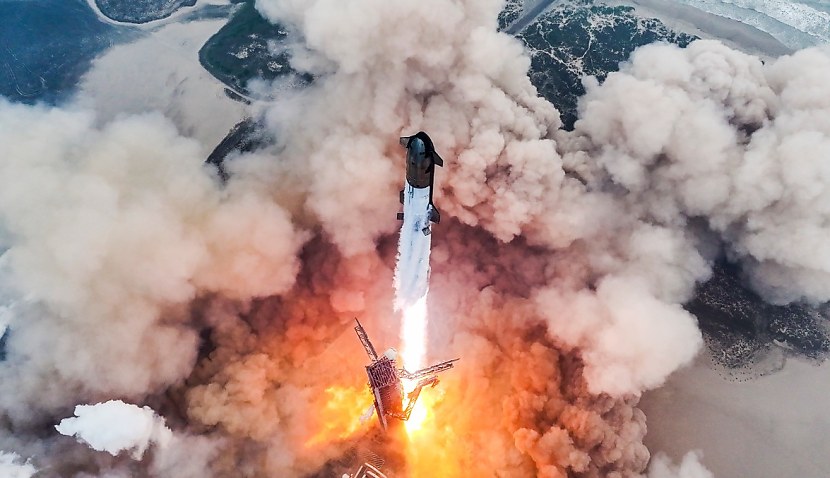
The business said the fourth blast-off, from Texas on 6 June, delivered “maximum excitement” and would lead to a “rapidly reusable future”.
It comes after the previous test flight in March reached orbit but eventually broke up during re-entry into the Earth’s atmosphere.
Starship is the collective name for the SpaceX Super Heavy booster rocket and Starship spacecraft, which are destined to one day fly humans to Mars. It will also play a significant role in NASA’s Artemis program, which plans to return humans to the lunar surface using a version of Starship.
After the latest success, SpaceX founder Elon Musk tweeted, “Today was a great day for humanity’s future as a spacefaring civilisation! Nothing unites us more than working together towards inspiring objectives.”
Meanwhile, in a post-blast-off debrief, SpaceX listed the mission’s achievements as follows:
“The Super Heavy booster lifted off successfully and completed a full-duration ascent burn.
“Starship executed another successful hot-stage separation, powering down all but three of Super Heavy’s Raptor engines and successfully igniting the six second stage Raptor engines before separating the vehicles.
“Following separation, the Super Heavy booster successfully completed its flip manoeuvre, boost back burn to send it towards the splashdown zone, and jettison of the hot-stage adapter.
“The booster’s flight ended with a landing burn and splashdown in the Gulf of Mexico seven minutes and 24 seconds into the flight.
“Starship's six second stage Raptor engines successfully powered the vehicle to space and placed it on the planned trajectory for coast.
“Starship made a controlled re-entry, successfully making it through the phases of peak heating and max aerodynamic pressure and demonstrating the ability to control the vehicle using its flaps while descending through the atmosphere at hypersonic speeds.
“Starlink on Starship once again enabled real-time telemetry and live high-definition video throughout every phase of entry, with external cameras providing views all the way to the flight’s conclusion.
“Flight 4 ended with Starship igniting its three centre Raptor engines and executing the first flip manoeuvre and landing burn since our sub-orbital campaign, followed by a soft splashdown of the ship in the Indian Ocean one hour and six minutes after launch.”
Previously, the first launch, in April last year, failed to reach orbit but surpassed expectations by crucially passing through Max Q, the period in which the spacecraft endures maximum dynamic pressure.
A second launch in November went one better with a successful first-stage separation and all of its Raptor engines firing as planned.
The milestone third launch reached orbit but without successful soft landings. SpaceX hopes to conduct six more launches this year alone.

Adam Thorn
Adam is a journalist who has worked for more than 40 prestigious media brands in the UK and Australia. Since 2005, his varied career has included stints as a reporter, copy editor, feature writer and editor for publications as diverse as Fleet Street newspaper The Sunday Times, fashion bible Jones, media and marketing website Mumbrella as well as lifestyle magazines such as GQ, Woman’s Weekly, Men’s Health and Loaded. He joined Momentum Media in early 2020 and currently writes for Australian Aviation and World of Aviation.
Receive the latest developments and updates on Australia’s space industry direct to your inbox. Subscribe today to Space Connect here.









